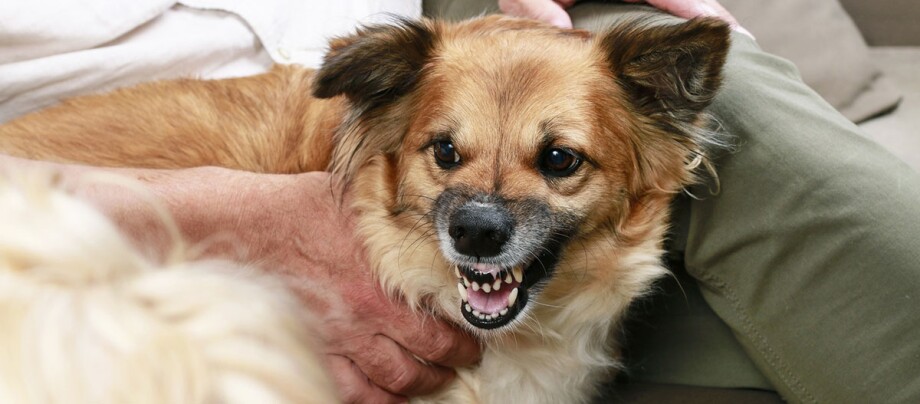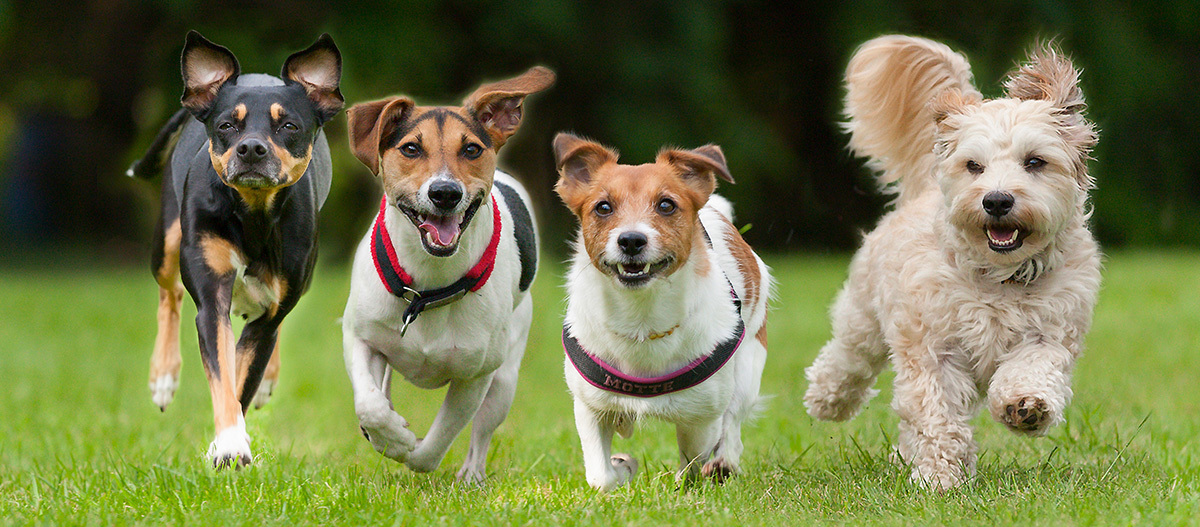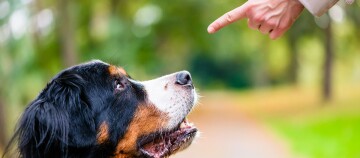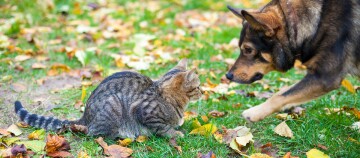Aggressive Dog - Causes of the Problem and What to Do as the Owner
07.10.2022 - Reading time: 4 minutes

No animal is evil by nature and yet hardly a week goes by in which a so-called “problem dog” makes the headlines. Often innocent bystanders are the victims. However, attacks on other dogs or pets or general intimidation within your local area feed the reputation of your four-legged friend. But what causes the problem and what can you do as the owner and also affected party do about it? Read here about what you should do about this sensitive topic.
What can cause aggression in dogs?
First thing’s first – aggression on its own isn’t bad behaviour rather a survival instinct. Aggressive behaviour is needed to assert oneself, to defend oneself and finally for survival. The problem occurs at the moment in which aggressive behaviour of any sort is either too much, or aimed at an incorrect target.
It becomes dangerous when the aggressor is much more dominant than those around it and cannot be called back. A dog as a an aggressive animal, which thinks it is superior physically to a human, always comes with a sharp “bite” and can be a real danger. Since pet dogs don’t normally have a specific reason to behave aggressively – unless they’re hunting for food or have to defend themselves against an aggressor – the cause for aggressive behaviour is often found in secondary factors.
Reasons for aggressive behaviour
- Failed socialisation: the early upbringing of the dog through fellow dogs or a human has been impaired or it didn’t happen at all
- Incorrect training: unsuitable training methods, lack of subordination towards the humans, from the dog’s perspective confusing feedback or misguided conduct create the potential for conflict between the human and the dog.
- Intentional “sharpening of the dog”: misuse of the dog as a replacement for a weapon or as a vehicle for the owner’s own self-esteem.
- Anxiety disorder: the dog is in a threatening situation (possibly also only from its perspective) and wants to defend itself.
- Misguided hunting instinct: some dogs interpret rapid movements in such a way that triggers their hunting reflex. Joggers or cyclists are then followed as “prey”.
- Neurological problems: rare, but not least, the animal’s aggressive behaviour may also be caused by unhealthy alterations in the brain.
Fortunately very rarely in our area, but still worthy of mention, there are infectious diseases such as rabies that can cause aggressive behaviour in dogs and other animals.
How does a dog display aggression?
An aggressive dog will use their body language to give off significant warning signs. Be careful if the dog snarls at you or gives you a threatening stare, pulls their lips back and shows their teeth. If these warnings are not successful from a distance, the dog may snap or fiegn attack before seriously attacking.
The dog’s posture is tense, the fur on its neck is standing on end. If the aggression comes from fear, the animal bends their back legs, rounds their back and flattens their ears and tail. Always take the loud sounds and physical communication of the animal seriously: a dog rarely attacks out of the blue.
What can I do with my problem dog?
If your own dog is showing sudden signs of aggression, a great deal of delicacy is required. Try to find out what might be the trigger for the aggressive behaviour.
Important questions on triggers:
- Have there been any changes in the dog’s life?
- Has he had a particular experience that frightens him?
- Does he have to defend resources like food or toys?
- Are there new people or more dominant dogs in his environment?
Are any breeds particularly aggressive?
Basically every breed of dog includes those animals that are quick-tempered and those that are completely relaxed. However, there is an assumption that different breeds of dog have a greater tendency towards being aggressive due to their history. This concerns breeds for which the breeder desires a lower sensitivity threshold and high bite force. In Germany, these breeds are listed in various so-called “breed lists”. Owners of such “listed dogs” must meet certain eligibility criteria, like being able to pass a subject knowledge test or have a clear criminal record. Listed dogs in Germany are, for example, mastiffs, pit bulls or Staffordshire Terriers, although if these dogs are reared responsibly and with the proper approach, they are able to live as peaceful family pets.

We have compiled pictures of various dog breeds in our dog magazine. Learn more about small, mid-sized and large dog breeds.
How should I behave with an aggressive dog?
If you meet an aggressive dog and you are unprepared, try if possible to deescalate the situation. Stay still, running away will put the dog into chase mode. If possible, place a large object between you and the dog. Turn your gaze away and position yourself sideways, not facing the dog or with your back turned to them. Stay calm. Do not scream and do not wave your arms around. Try to behave as normally as possible, in this way there is a good chance that the dog will lose interest. If none of this works and the dog has decided to be vicious, to bite, hold out a substitute object, like a bag, towards it.


